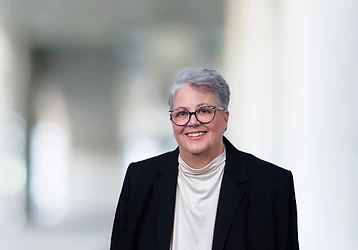GLWA Announces Proposed New Rules
The Great Lakes Water Authority (GLWA) recently announced that the GLWA Board has opened public comments and proposed updates to the rules and regulations for the industrial pretreatment program. A copy of the proposed rules can be found at GLWA.org. The deadline for written public comments is November 11, 2024. Comments may be submitted either by e-mail to iwc@glwa.org or by US mail to:
GLWA Industrial Waste Control
Attn: Operations-Manager
9300 W Jefferson
Detroit Michigan 48209
Below is a discussion of the main proposed changes.
With respect to polyfluoroalkyl substances (PFAS), GLWA added eleven (11) additional compounds to the definition of PFAS. The existing rule requires any User who manufactured PFAS Compounds, previously used, currently uses, or plans to use materials containing PFAS Compounds to develop plans for the reduction and elimination of the listed PFAS Compounds. Most significantly, GLWA has added a limit for Perfluorooctane Sulfonic Acid (PFOS) of 65 ng/l. Previously, there were no limits for any PFAS compound.
There have and remain questions about the proper sample collection methods and analysis of PFAS in wastewaters. When GLWA drafted the rule changes, the US Environmental Protection Agency (US EPA) had yet to finalize its revised method for analyzing PFAS in wastewaters, known as Method 1633. In its rule changes summary, GLWA notes “The US EPA has developed a Wastewater Test Method, #1633, for analyzing PFAS Compounds in Wastewater, which is currently under review. The method is projected to be finalized in late 2023, and the additional analytes will be required upon finalization of the test method.” EPA did in fact issue a “final” version of Method 1633 Analysis of Per- and Polyfluoroalkyl Substances (PFAS) in Aqueous, Solid, Biosolids, and Tissue in January 2024 as well as a subsequent errata sheet, but has yet to formally propose Method 1633 at 40 CFR Part 136, but expects to do so by the end of 2024 or beginning of 2025. Until such time, EPA does not mandate its use for compliance with NPDES permits or Clean Water Act compliance but does encourage its use.
It is unclear whether GLWA is mandating use of Test Method 1633 now or only when the Test Method is formally adopted by EPA. GLWA left in place the current language that states: “Any monitoring program shall be conducted in accordance with sample collection methods defined by the EGLE or USEPA and analyzed in accordance with 40 CFR 136 or other approved methods recognized by the State of Michigan; or where USEPA or the State of Michigan has not established sample collection methods or approved analytical methods in 40 CFR 136, the methods shall be specified by GLWA.”
GLWA also proposes to change the definition of total phenolic compounds from the sum of a list of individual phenolic compounds to a definition based on the test method used. Specifically, the new language provides: “Total Phenolic Compounds” means the quantitative total recoverable phenols determined by US EPA Method 420.1: 4-Aminoantipyrine (4AAP).” Fortunately, the limit for Total Phenolic Compounds has increased to 5 mg/l. from 1 mg/l.
The Cyanide limit has been changed to Available Cyanide with a limit of 1.5 mg/L. This change may not have a large impact on many users who are regulated as Categorical Dischargers, who are already subject to more stringent federal limits. Note that testing for Available Cyanide is a bit more complicated and expensive.
Other minor changes include the decrease of the Phosphorus limit from 150 mg/L to 125 mg/L (above 12 mg/l, companies are subject to a surcharge). The Copper limit was reduced from 3.0 mg/l to 0.72. and Mercury from 0.01 to 0.002 mg/l (the detection limit).
Overall, the changes are not too voluminous and have impacts on few parts of industrial users’ operations. Please contact the authors of this Client Alert or your Butzel attorney if you would like to discuss how the changes impact your facility.
Beth S. Gotthelf
248.258.1303
gotthelf@butzel.com
Susan L. Johnson
248.258.1307
johnsons@butzel.com












